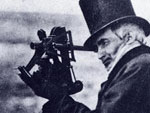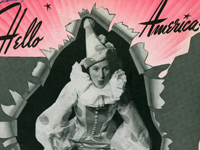The Cultural Landscape of Slavery: Slave Quarters
Historian John Michael Vlach looks at the architecture of the 1840s slave quarters at Hampton National Historic Site.
This feature is no longer available.
Historian John Michael Vlach looks at the architecture of the 1840s slave quarters at Hampton National Historic Site.
This feature is no longer available.
Historian John Michael Vlach very briefly introduces the overseer's house and slave quarters at Hampton National Historic Site.
This feature is no longer available.
Historian John Michael Vlach looks at the stables at Hampton National Historic Site. He talks about the work slaves did in these stables, including as stablehands and jockeys, during the antebellum period.
This feature is no longer available.
Historian John Michael Vlach briefly reflects on how slaves constructed communities for themselves independent of their masters' lives at estates such as Hampton National Historic Site.
This feature is no longer available.
Historian John Michael Vlach speculates very briefly on what slave quarters removed from the main estate at Hampton National Historic site may have looked like.
This feature is no longer available.
Historian John Michael Vlach compares the grounds of the main estate at Hampton National Historic Site and the slave quarters and working areas of the same estate. He points out what the differences in organization and aesthetic emphasis indicate about the division of society on the estate.
This feature is no longer available.
Historian John Michael Vlach introduces the Hampton Estate in Towson, MD. Built in 1745, the estate's owners worked in various industries and farming ventures, and owned many slaves.
This feature is no longer available.
Historian John Michael Vlach very quickly reviews the architecture of the Hampton Estate in Towson, MD. Built in 1745, the estate's owners worked in various industries and farming ventures, and owned many slaves.
This feature is no longer available.

During the Civil War, the Survey of the Coast found a new purpose—preparing secret reports on the waters along the Atlantic seaboard to improve Union blockades. This website collects and shares materials from the United States Coast Survey, 1861 through 1865.
You can, for example, read any of nine Notes on the Coast of the United States, prepared by the Blockade Strategy Board. These detail sailing conditions and geography for use by Union captains and generals. Summaries, located under the "Documents" heading, cover the process of creating these lengthy reports.
Additional features include a brief biography of Alexander Dallas Bache, U.S. Coast Survey supervisor; an 1861 map showing slave population density; short overviews of some of the other members of the survey team during the Civil War; and a 33-page PDF concerning the history of the Coast Survey between 1843 and 1867. The PDF contains several maps and photographs.
Using the search box on the main page will retrieve Civil War-era maps of cities, camps, works, battlefields, and more.

The cultural heritage of Maryland is readily accessible here through thousands of digitized documents, maps, and images arranged into more than 40 collections and two exhibits. Baltimore's native son and prominent early 20th-century journalist H.L. Mencken is featured through a collection of 19 portraits, artifacts, and letters. Edgar Allen Poe, who lived in Baltimore late in his life, can be glimpsed through 18 portraits, drafts, and letters. Another collection offers digital copies of primary sources from the War of 1812, including an original draft of the "The Star-Spangled Banner."
Other collections include photographs of African American life, a selection of sports-related items, photographs and watercolor paintings of old houses and churches in Queen Anne's County, vintage photographs of Baltimore streets and street cars, and a series of photographs awaiting identification from collection users. Ample historical context, including library donation information, is provided for all collections. The website's blog will be useful for those interested in library sciences, preservation, and digital archiving.